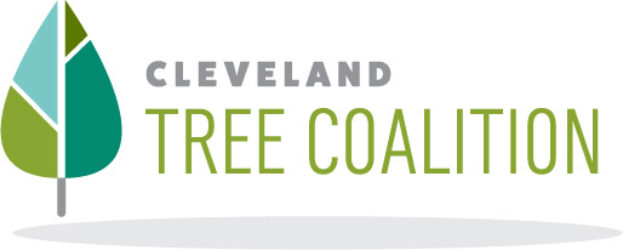City of Cleveland and Cuyahoga County Remain Far Below National Averages, Impacting Public Health and Costing Millions
 The Cuyahoga County Planning Commission released an updated Urban Tree Canopy Assessment for the City of Cleveland and Cuyahoga County, which shows that the tree canopy cover of both the City of Cleveland and Cuyahoga County decreased since 2013 and remains far below levels considered adequate to receive the health and wellness benefits of trees. The assessment is an update of a previous study released in 2013. Tree canopy cover – the layer of leaves, branches, and trunks of trees that cover the ground when viewed from above – in Cuyahoga County decreased 6% (from 37% to 35% of county land area), and in the City of Cleveland decreased 5% (from 19% to 18% of city land area). Compared to urban areas nationwide, Cuyahoga County tree canopy cover is lower than the U.S. average of 39%, and Cuyahoga County may be losing tree canopy at a faster rate than average (canopy loss in U.S. urban areas over a similar time frame was estimated by a recent study to be 1%).
The Cuyahoga County Planning Commission released an updated Urban Tree Canopy Assessment for the City of Cleveland and Cuyahoga County, which shows that the tree canopy cover of both the City of Cleveland and Cuyahoga County decreased since 2013 and remains far below levels considered adequate to receive the health and wellness benefits of trees. The assessment is an update of a previous study released in 2013. Tree canopy cover – the layer of leaves, branches, and trunks of trees that cover the ground when viewed from above – in Cuyahoga County decreased 6% (from 37% to 35% of county land area), and in the City of Cleveland decreased 5% (from 19% to 18% of city land area). Compared to urban areas nationwide, Cuyahoga County tree canopy cover is lower than the U.S. average of 39%, and Cuyahoga County may be losing tree canopy at a faster rate than average (canopy loss in U.S. urban areas over a similar time frame was estimated by a recent study to be 1%).
This updated assessment reinforces the urgency and importance of the efforts of the Cleveland Tree Coalition to increase the region’s tree canopy. The Cleveland Tree Coalition is a collaborative group of public, private and community stakeholders that have partnered with the City of Cleveland and Cuyahoga County to rebuild our urban forest through the development and implementation of the Cleveland Tree Plan. The Coalition has set a goal of increasing Cleveland’s tree canopy to 30% by 2040.
“This data shows that we need to greatly increase our efforts to address this issue,” said Jill Koski, president and CEO of Holden Forests & Gardens, one of the supporting organizations of the Cleveland Tree Plan. “The strong commitments made by Cuyahoga County and the City of Cleveland are critical building blocks in our efforts, but now we need the participation of thousands of others in the community to reach our goals.”
“Trees make our neighborhoods safer, healthier and more valuable,” said Rich Cochran, president and CEO of Western Reserve Land Conservancy. “Trees are far more important than we ever realized. The science is now clear; in the context of cities, trees are essential to human health and happiness. This report shows that despite increased efforts of late, much more work needs to be done. We need to plant 10 times as many trees per year to reach our goals.”
The Cleveland Tree Coalition was formed after the release of the initial Cuyahoga County Urban Tree Assessment (2013) and the Cleveland Tree Plan (2015) to address the critical need to increase the region’s tree canopy. Implementation of the Cleveland Tree Plan continues. This updated assessment makes it clear that the goals and actions set forth by the original plan must be implemented to preserve our urban forest and protect the future health and resilience of Cuyahoga County communities.
Countless studies confirm the many benefits of a healthy urban forest. Trees improve air quality by removing pollution from the air and reducing respiratory illnesses such as asthma, especially among children. Trees improve water quality by reducing stormwater runoff to sewers. Trees reduce energy costs by lowering urban temperatures and providing shade in the summer. Trees increase property values. Cleveland’s tree canopy, limited as it is, provides $28 million in benefits to the city each year.
The Cleveland Tree Coalition applauds the recent financial commitments made by Cuyahoga County Executive Armond Budish and Cleveland Mayor Frank Jackson. Cuyahoga County plans to invest $5 million over five years to support the region’s tree canopy. The Cuyahoga County Healthy Tree Canopy Grant Program recently announced awards totaling $950,000 to 26 projects sponsored by municipalities, neighborhoods, and nonprofits. The City of Cleveland committed to investing $10 million over ten years to plant trees in Cleveland neighborhoods.
“Everyone in the community can make a difference,” said Sandra Albro, co-chair of the Cleveland Tree Coalition. “Residents can encourage their local leaders to make trees a priority in city planning and care for the trees on their own property. Business and other organizations need to actively manage the trees on the hundreds of acres they control. Municipalities of all sizes need to invest in the people and equipment necessary to care for trees in their community.”
The Cleveland Tree Coalition will lead a broad outreach effort in celebration of Arbor Day, April 24, 2020, to plant and give away hundreds of trees throughout Cuyahoga County. This annual event helps promote the importance of a robust tree canopy by engaging residents with multiple educational opportunities.
You can find the full report, visuals, and data on the Cuyahoga County Planning Commission website:
- Urban Tree Canopy Assessment main page
- Full report, executive summary, data downloads: Downloads
- County summary
- Municipalities
- Cleveland neighborhoods
- Watersheds, rights-of-way, and other land uses available in the sidebar
